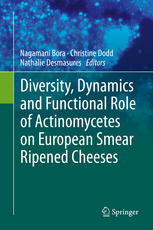

Most ebook files are in PDF format, so you can easily read them using various software such as Foxit Reader or directly on the Google Chrome browser.
Some ebook files are released by publishers in other formats such as .awz, .mobi, .epub, .fb2, etc. You may need to install specific software to read these formats on mobile/PC, such as Calibre.
Please read the tutorial at this link: https://ebookbell.com/faq
We offer FREE conversion to the popular formats you request; however, this may take some time. Therefore, right after payment, please email us, and we will try to provide the service as quickly as possible.
For some exceptional file formats or broken links (if any), please refrain from opening any disputes. Instead, email us first, and we will try to assist within a maximum of 6 hours.
EbookBell Team

4.8
94 reviewsCheese is a significant part of European culture and its production, both industrial and artisanal, is a significant economic activity. Smear cheeses are one element of that diverse cultural and economic activity. And they are an ecological niche which illustrates the diversity of, especially, though not exclusively, actinomycetes. Mainstream ecology looks at the oceans, soil, rhizosphere, human microbiomes and plant, insect and marine animal symbionts which influence the climate, agriculture, human health and the ecology of higher organisms. But food microbiology can influence human well-being and nutrition and, as an ecological niche, illustrates the same broad principles in action as other ecological studies, but, in many ways offers a more controlled and controllable environment to study. The bacterial diversity present on smear cheese surfaces is like a model system which will provide the vehicle for developing a research strategy for food-environment microbiology. In this book we take a look at food-based ecological niche by focusing on the actinomycetes. This book presents many of the aspects, from the taxonomy of the cheese flora and its interaction with the ‘house flora’ to the functional manipulation of the organoleptic properties of the dairy product to the pathogenic risk. Modern methods of taxonomic characterization provide significant data in understanding the functional roles of members of the microbial flora including their enzymatic potential, the presence of virulence genes or probiotic factors. Taxonomy guided high throughput metagenome analysis is a generic approach to systems level analysis of microbial ecosystems, such as those found in the food chain. The data generated by metagenomic analysis will require extensive bioinformatic support which will provide the data not only for taxonomic characterization, community analysis and ecosystem dynamics but the data will also provide a foothold into the evolution and ecosystem function of the community. The ultimate understanding of the metabolome and the regulation of such a complex ecosystem will provide the framework for further technological advances in solid state fermentation.